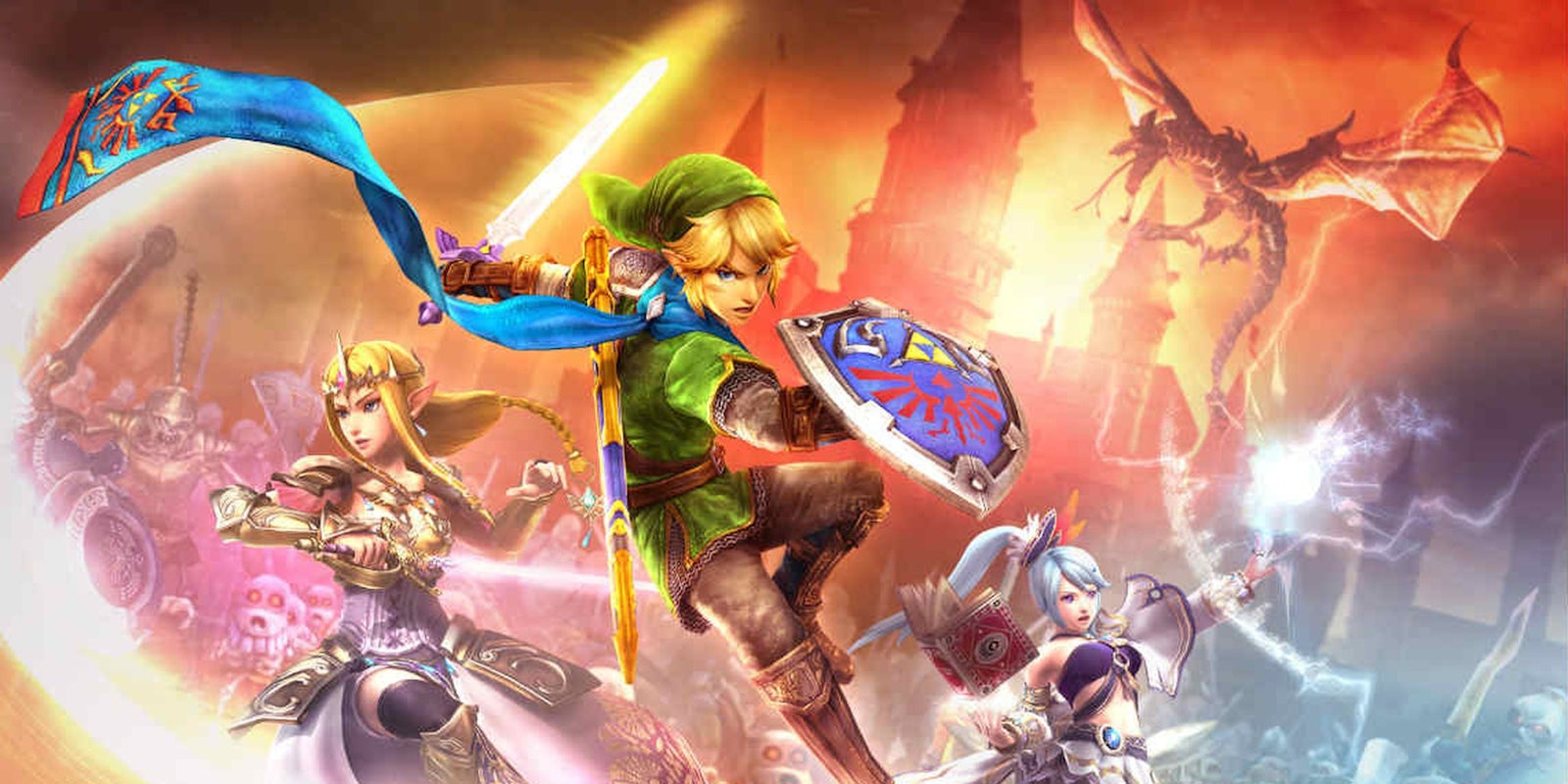If Nintendo were to publish more games like Hyrule Warriors, the Wii U might feel more palatable to the traditional gaming audience.
The Dynasty Warriors games draw on the martial arts film trope of a hero cutting or punching his way through hordes of bad guys on the way to a big end battle, typically with the top villain.
The Legend of Zelda games, meanwhile, bear a similarity to Michael Moorcock’s Eternal Champion series of fantasy novels. A heroic soul occupies different heroes, in different universes, always on a mission to fight chaos. In the Zelda games the hero is always a kid named Link who wears a green tunic. He is almost always fighting a demonic villain named Ganon or Ganondorf. He is almost always rescuing a princess named Zelda.
While the Dynasty Warriors games are preposterously violent, The Legend of Zelda games are cute and endearing. Yet they combine so smoothly in Hyrule Warriors that it never feels like an aberration in the Zelda franchise, or a game any less intended for the traditional audience than the Dynasty Warriors series it draws on.
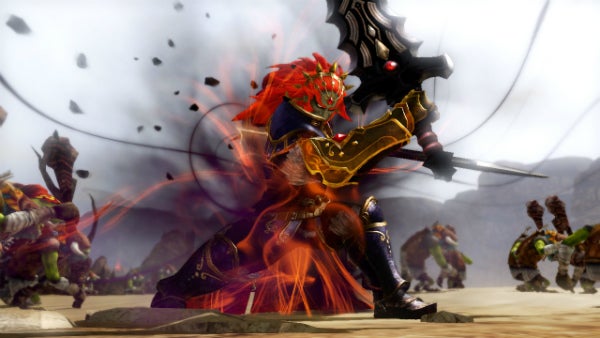
Hyrule Warriors is first and foremost a brawler game. The objective is to beat up hordes of weak enemies using button combinations that launch increasingly complex and devastating attacks as the character gains experience points by killing enemies and leveling up.
The mobs of enemy soldiers are mostly an annoyance that serve the light strategy game that also defines the Dynasty Warriors template. The map is broken up into open areas and Keeps that generate mobs of enemies. By clearing a Keep of enemy units, ownership of the Keep flips sides and it generates mobs of friendly foot soldiers.
Knowing which Keep to take and when is the strategic element of the game. Let’s say you’re escorting a friendly Engineer, who needs to blow up a bridge for you to advance through the level. If he dies, you lose the battle—so taking out enemy Keeps in his path is a good strategy.
Every so often specific objectives on the map will pop up. It’s tempting to continue taking enemy Keeps when you get into a groove, pulling off combinations smoothly and wiping out hundreds of enemies in minutes, but failure to achieve objectives quickly can also cost you the battle. The need to balance massacring the enemy with smart strategic play is what keeps Hyrule Warriors interesting, especially at high difficulty levels.
There are powerful enemy soldiers spread across the map who require careful timing to defeat, friendly characters of the same type who will assist you and who you want to keep safe, and the level ends with a Boss character who requires paying attention to very specific patterns of attack. Clear the map, kill the Boss, and you win the battle.
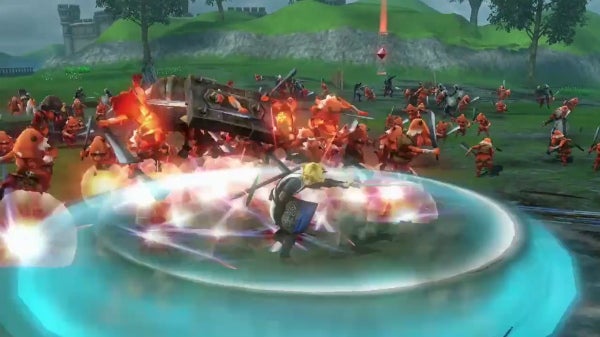
Hyrule Warriors takes this Dynasty Warriors formula and overlays it with thematic elements from the Zelda games, by way of telling the recurring tale of the “hero of legend.” This time, Link is a trainee in Princess Zelda’s army.
There’s a villain who covets the powerful Triforce, and there are relics of power that are split into pieces and stored away for safe keeping. They need to be found to fight the evil force plaguing the land. If you’ve played a Legend of Zelda game, you know precisely how this story is going to go.
The story is window-dressing, made accessible for players who are somehow unfamiliar with The Legend of Zelda after 16 previous games in the series. Hyrule Warriors genuinely feels like the 17th game in that series, and that’s what surprised me.
Recycling elements from The Legend of Zelda into a Dynasty Warriors game could have felt like a cheap franchise cash-in. Dynasty Warriors: Mobile Suit Gundam, based on the famous Japanese mecha franchise, felt completely ridiculous to me. The Dynasty Warriors template didn’t fit Gundam fiction at all and that got in the way of my enjoying the game.
Hyrule Warriors, on the other hand, is an entry in an inherently preposterous franchise—it’s not unusual to kill 2,000 enemy foot soldiers over the course of a single level. That doesn’t feel ridiculous to me, at all. Maybe it’s having watched the Lord of the Rings trilogy too many times. What does it matter if it’s orcs or Moblins?
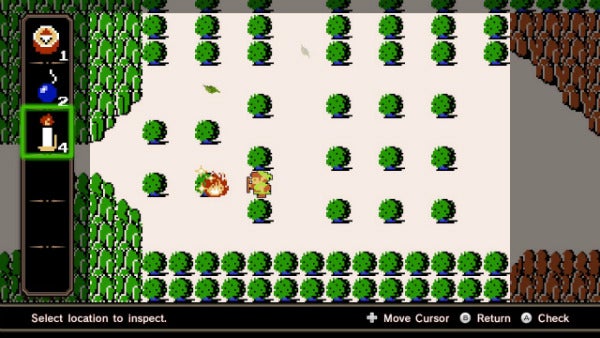
I’m bored with Zelda games not including dialogue during cutscenes when characters are meant to be speaking. The characters move their mouths, and the text rolls out in a chat box at the bottom of the screen, and I have to wonder whether this is about old-school charm or lack of desire to localize speech.
It’s probably the former. There’s a bonus Adventure mode in Hyrule Warriors that incorporates 8-bit graphics from the original Legend of Zelda on the Nintendo Entertainment System, and which uses a map that looks an awful lot like the Overworld in the original game. But I still rolled my eyes at the inability to hear these characters speak.
I can’t really hold this against Hyrule Warriors, as it has to stick to the basic Dynasty Warriors formula, but the constant button mashing can get really boring. The joy of combat in any brawler is pulling off the combinations. Varying between “X,X,X,X” and “X,Y,X,Y” and “X,X,Y,Y,X” for up to an hour, or whatever the time limit is set to on a specific map, wore on me. Hyrule Warriors is a game best taken in limited doses, versus sitting through and pounding out levels.
I find the continued use of exaggerated female bodies really strange, in this climate, even for a Nintendo game. There’s a sorceress called Cia in Hyrule Warriors who has impossibly large breasts held up by her armor.
And while that’s par for the course in most video games, there’s something about our growing awareness of how these issues can be problematic, and how friendly the Zelda universe is to gamers who don’t fit the traditional mold, that didn’t feel right to me.
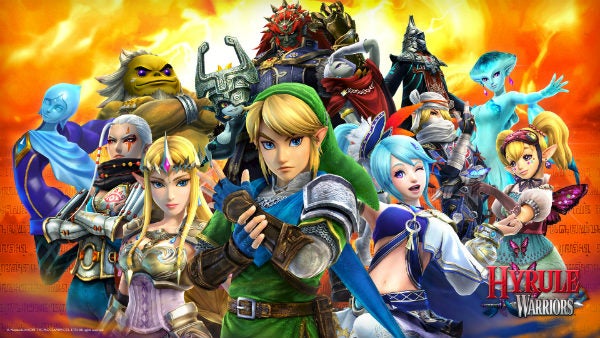
There’s something comforting about hearing recognizable Zelda sound effects, like the fanfare when you open a treasure chest, or choosing your background music from different games in the franchise.
When you need special equipment to defeat certain Bosses, it’s gear you recognize from previous Zelda games, like bows and arrows and boomerangs. You throw bombs as a special weapon. You make bottles to fill with red potion you can drink to recover hearts during a fight. You earn Rupees to spend in the Bazaar to make gear to improve your combat potential.
When you see a small field of grass on the ground, you know to go chop it down if you’re short on health, because there are always a few hearts hidden in the grass in a Zelda game. You’d figure this out quickly, anyway, but when you see pots lining the walls of a Keep, you know to go smash them because there might be hearts in there too.
Enemies take familiar Zelda names like Darknut knights, and Deku Baba trees, and none of this feels forced or inappropriate. You don’t need to recognize any of this to appreciate Hyrule Warriors independent of any relationship to Zelda games, however. Hyrule Warriors is not easy. I had to turn the difficulty all the way down on more than one occasion to get through the game in a timely fashion.
That’s a relationship I am used to with so-called “core games,” or games aimed not at casual players, but traditional gamers who want some good, old-fashioned punishment through game difficulty.
Hyrule Warriors is a game, like Zombi U, that shows what the Wii U hardware is capable of as a core system. It also represents some desperately needed third-party support. Hyrule Warriors was developed in collaboration with Team Ninja, which is currently developing Dead or Alive and Ninja Gaiden games.
Nintendo needs to make more exclusive games intended for the core audience, like Hyrule Warriors, to establish the library of titles that might turn the traditional audience around on whether or not the Wii U is worth their time.
Score: 4/5

Disclosure: Our review copy of Hyrule Warriors was provided by Nintendo.
Image provided by Nintendo

